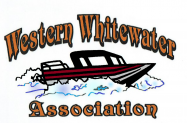The Frank Church-River of No Return Wilderness Management Plan is of prime interest to the WWA, because it is through this plan that the U.S. Forest Service regulates private jetboat access to the Salmon River within the Wilderness. In December 2003, the Forest Service adopted a new plan after years of study, public comment, and heated debate. The WWA closely monitored the decision making process and was heavily involved in the public debate from the moment the Forest Service announced its intention to develop a revised plan, until the day it was released. Under the new plan, private jetboat travel restrictions within the Wilderness have been relaxed somewhat and access has been improved. However, the WWA believes that the new regulations are still overly restrictive to private jetboat use and do not reflect the spirit or intent of the Central Idaho Wilderness Act.
Background
In December 1994, the Forest Service issued a Notice of Intent to conduct an environmental impact study of the Frank Church-River of No Return Wilderness for use in revising the Forest Service’s wilderness management plan. In January 1998, the Forest Service released a Draft Environmental Impact Statement (DEIS) that contained five alternative management strategies.
The WWA was opposed to all of the proposed alternatives, as they imposed inequitable and unnecessary restrictions on private jetboat access to the Main Salmon River within the Wilderness. After widespread public outcry that the range of alternatives was insufficient and that all options restricted use below current levels, the Forest Service released a Supplemental DEIS (SDEIS) in September 1999. The SDEIS contained six additional alternative management strategies. Further details of the DEIS and SDEIS can be found on the U.S. Forest Service Web site.
The WWA viewed all but one of the eleven alternative management strategies as overly restrictive to private jetboat access within the Wilderness and contrary to the intent of Central Idaho Wilderness Act. Accordingly, the WWA’s public comment on the DEIS and SDEIS was submitted in February 2000.
The Final Environmental Impact Statement
The Forest Service delayed the release of the Final Environmental Impact Statement (FEIS) until August 2003. The FEIS consolidated the eleven management alternatives from the DEIS and SDEIS into five. Under Alternatives A and B, private jetboat use within the wilderness would have been maintained at then current levels. Alternative C offered a private user emphasis and would have increased private jetboat access significantly. Alternative D provided for moderately increased jetboat access and Alternative E provided for slightly increased usage. Alternative D was the “Preferred Alternative”. Alternative E was the “Proposed Action”. A Summary of the FEIS is available on the U.S. Forest Service Web site.
The WWA viewed the private powerboat regulatory controls of Preferred Alternative D as overly restrictive and complicated. However, the WWA believed that with some adjustments and clarifications, Alternative D would be acceptible and could be supported. The WWA’s public comment on the FEIS was submitted to the Forest Service on October 24, 2003.
The Record of Decision
In December 2003, the Forest Service issued their Record of Decision and Revised Wilderness Management Plan (ROD). The ROD selected Alternative D of the FEIS with modifications as the basis for the new management plan. The ROD contained the following statement as an explanation of the decision: “By selecting Alternative D with modifications, we are approving the management direction that maintains the integrity of Wilderness and Wild and Scenic River resources; establishes future management direction; and balances commercial and noncommercial use for current and future generations.”
Under the new management plan, private jetboat usage within the Wilderness will be limited to no more than 6 boats on the river at any one time during the summer control season. The maximum length of stay is 7 days. As under the previous regulations, there are no restrictions on the number of private jetboat launches outside of the control season. The new regulations increase private jetboat access above the old limits of 15 boat use days per week. The WWA contends, however, that the new access levels are still far below the 1978 usage levels which Congress established as a floor for powerboat use in the Central Idaho Wilderness Act of 1979.
According to the ROD, Alternative D was modified “to implement an improved monitoring program” designed to focus on visitor use and experiences and campsite and other resource conditions “to provide a basis for evaluating future changes to recreation management within the Wilderness.” Purportedly, monitoring programs will be designed to gather usage and other information on a year-round basis. Under the new management plan, the strategy for the Main Salmon River calls for emphasis on noncommercial and commercial float boating during the summer season and noncommercial and commercial jetboat and float boating, fishing, and hunting during the other seasons. The complete ROD can be viewed on the U.S. Forest Service Web site.
